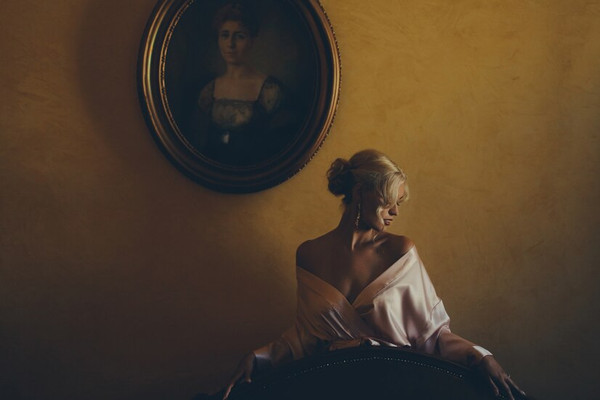37 World’s Most Famous Paintings That Shaped Art History
Posted by MintSuper Art on 15th Jan 2025
Famous paintings are not just magnificent pieces of art; they also reflect human history, culture, and inventiveness. They document moments of tremendous change, tell stories of resilience and creativity, and preserve emotions that endure. These classics trace the progression of artistic expression, from the Renaissance's emphasis on humanism to modern art's radical abstraction. They inspire millions, pique our interest, and connect us to the past, providing insights into the communities and minds that shaped them. Famous paintings are enduring representations of human achievement, acting as links between generations, civilizations, and concepts.
Diverse movements have defined different eras and styles throughout art history. The Renaissance (14th-17th centuries) stressed realism and humanism, as evidenced by works like The Mona Lisa. The Baroque period produced dramatic contrast and grandeur, as shown by The Night Watch. Impressionism, pioneered by artists such as Monet, used light and color to capture transitory moments. Van Gogh led Post-Impressionism, which emphasized emotional intensity and brilliant colors. Picasso and Dalí pioneered modern trends such as Cubism and Surrealism, which challenged old rules and expanded the boundaries of form and imagination. Each movement adds layers of creativity, forming a rich tapestry of art history.
Top Famous Paintings and Their Artists
Throughout history, several paintings have stood out as defining icons of their era, created by famous artists who pushed the limits of creativity. These artworks are renowned not merely for their beauty but also for their capacity to evoke strong emotions, tell captivating stories, and represent the cultural and historical circumstances in which they were created.
Here is the list of the world's most famous paintings with the great artists who created them.
Mona Lisa – Leonardo da Vinci (1503–1506)
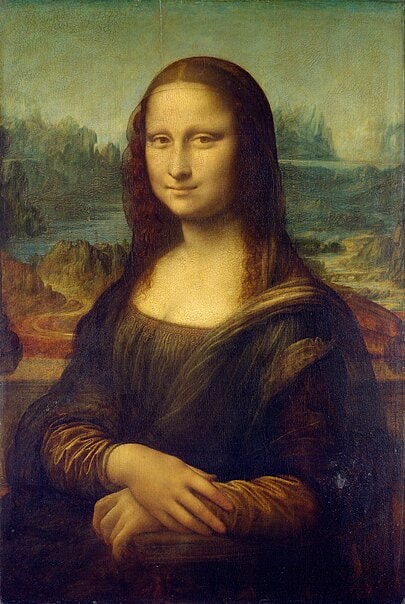
The Mona Lisa, painted by Leonardo da Vinci during the Italian Renaissance, exemplifies the period's emphasis on humanism and naturalism. Mona Lisa, also known as La Gioconda, is the wife of Francesco del Giocondo. It was painted between 1503 and 1506 and is notable for its enigmatic smile and mastery of sfumato, a technique used in creating a subtle transition between tones and hues. As a hallmark of Renaissance art, it demonstrates a meticulous balance of symmetry and realism, capturing the subject’s lifelike gaze and serene expression. The painting’s identity and mystery resonate across centuries, symbolizing intellectual and artistic innovation. This painting has a cultural impact that makes it one of the most recognized and studied pieces of art in history. The picture is housed at the Louvre Museum in Paris.
Read more about the famous painting of women
The Last Supper – Leonardo da Vinci (1495–1498)
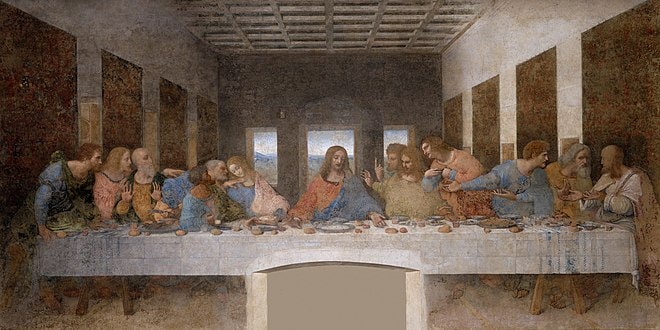
The Last Supper of Leonardo da Vinci (Cenacolo Vinciano) is one of the most famous paintings in the world. This artwork was painted between 1494 and 1498 under the government of Ludovico il Moro and represents the last "dinner" between Jesus and his disciples. He uses the linear perspective to draw the viewer’s eye to Christ as the central figure. It is surrounded by the emotionally charged reactions of the apostles. This painting represents loyalty, betrayal, and divine sacrifice. The deteriorating condition of the fresco has necessitated extensive restoration, yet its cultural significance remains profound. It’s a testament to da Vinci's genius that inspires the world.
The Creation of Adam – Michelangelo (1512)
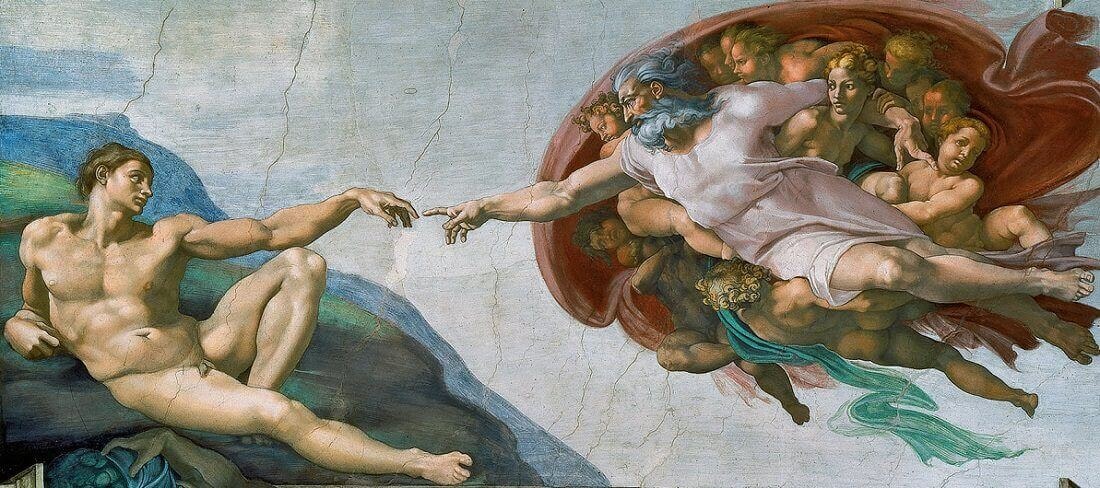
Michelangelo’s The Creation of Adam, part of the Sistine Chapel ceiling painted in 1512, is one of the most iconic works of the High Renaissance. Depicting God reaching out to give life to Adam, this fresco captures the divine connection between humanity and the Creator. Michelangelo’s masterful anatomy and dramatic use of space highlight the power and elegance of the human form. The themes of creation, divine grace, and human potential are central to this masterpiece. This painting remains a symbol of artistic and spiritual achievement. It is located in Vatican City.
The Birth of Venus – Sandro Botticelli (1484–1486)
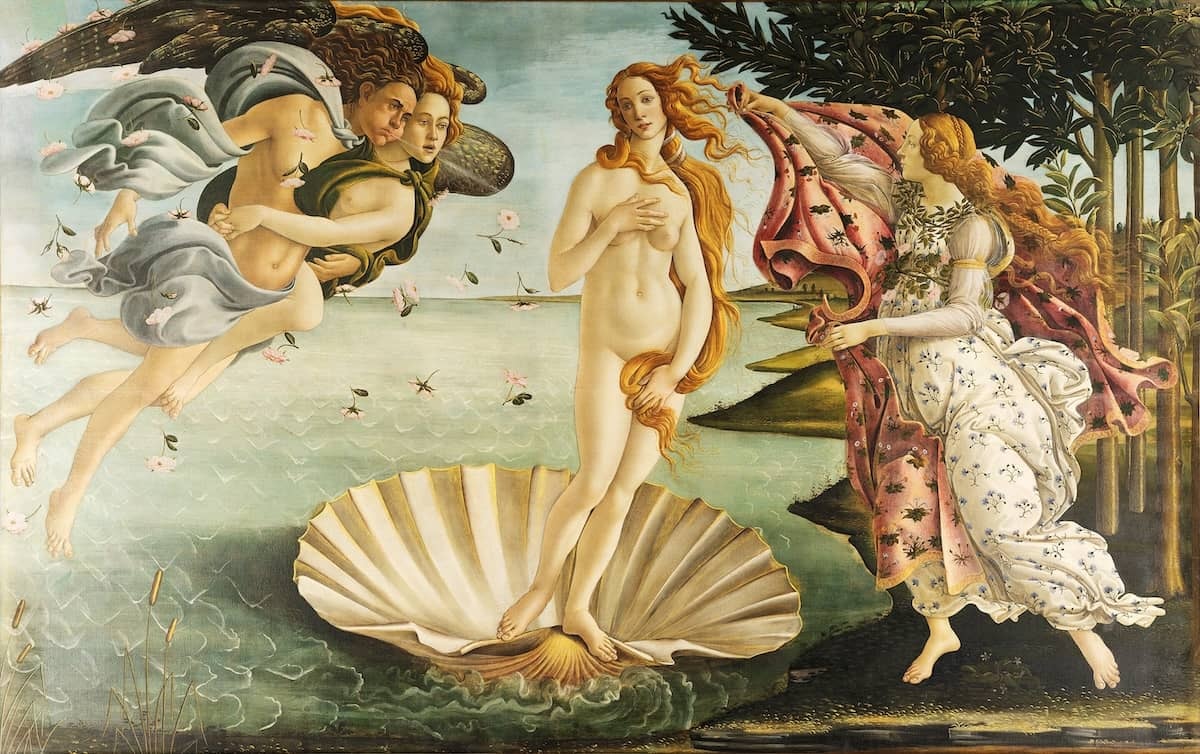
The Birth of Venus by Sandro Botticelli is a typical work of the Italian Renaissance, painted between 1484 and 1486. This mythological masterpiece portrays Venus emerging from the sea on a shell that symbolises beauty and love. He uses flowing lines and delicate colors to create a dreamlike quality. The painting reflects Renaissance ideals of classical mythology and humanism. It is housed in the Uffizi Gallery in Florence, it continues to enchant viewers with its ethereal charm and symbolic depth.
School of Athens – Raphael (1509–1511)
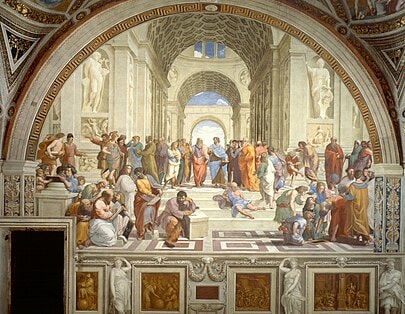
School of Athens is a fresco painted between 1509 and 1511 by Raphael in the Apostolic Palace, Vatican City. It embodies the intellectual spirit of the Renaissance, featuring great philosophers such as Plato and Aristotle. His perspective and architectural grandeur create a sense of harmony and balance. The painting celebrates knowledge, reason, and ideas, making it a cornerstone of Renaissance art. Its meticulous detail and dynamic composition continue to inspire admiration.
Arnolfini Portrait – Jan van Eyck (1434)
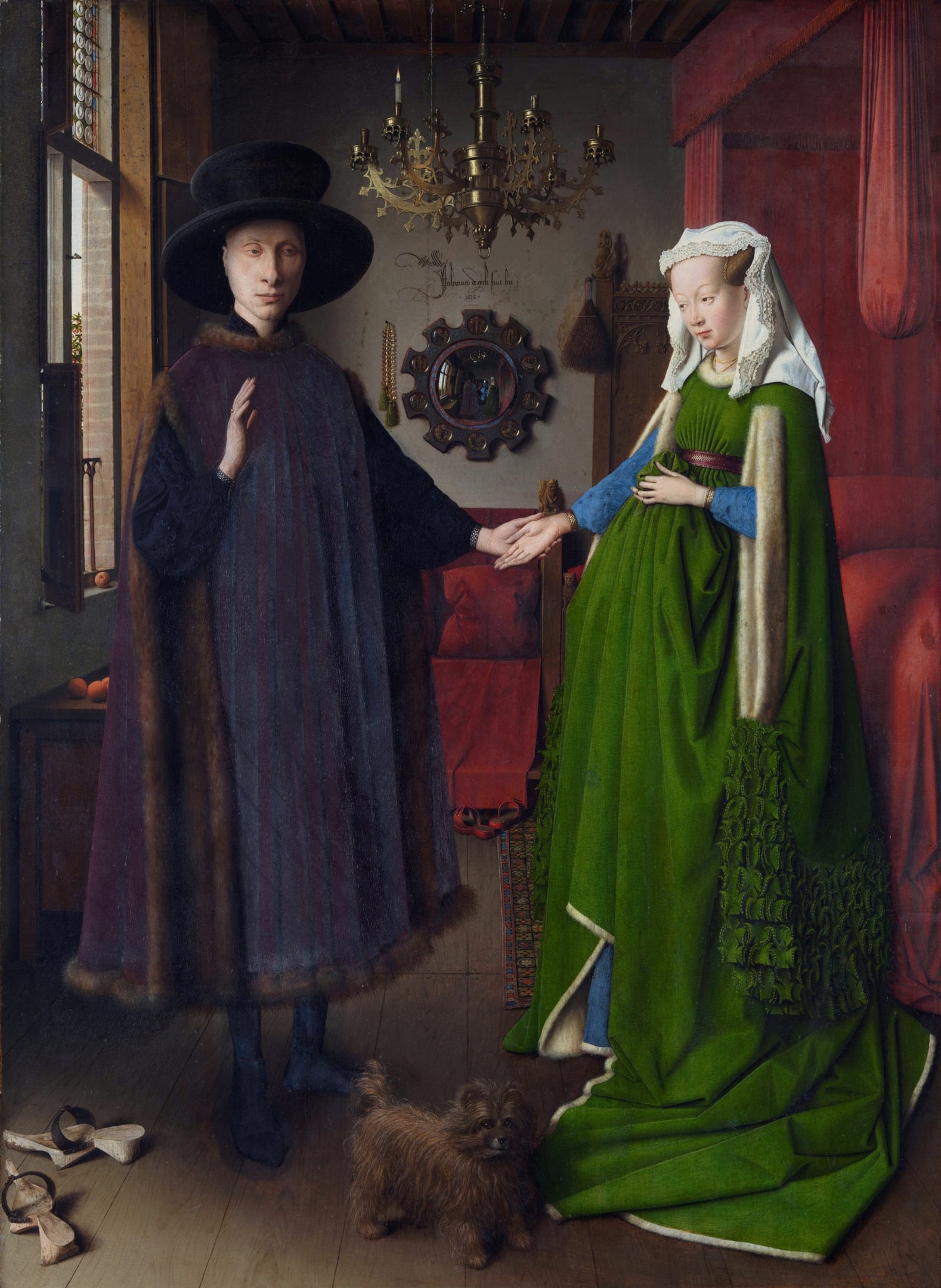
Arnolfini Portrait is a masterpiece of Northern Renaissance art. It was painted by Jan van Eyck in 1434. This oil painting depicts a wealthy couple in a domestic setting, rich in symbolic detail. The convex mirror in the background, the reflection of figures, and the use of light showcase his technical brilliance. Themes of marriage, wealth, and domestic life are woven into the painting. It’s housed in the National Gallery, London, and remains a marvel of artistic precision and symbolism.
The Night Watch – Rembrandt van Rijn (1642)
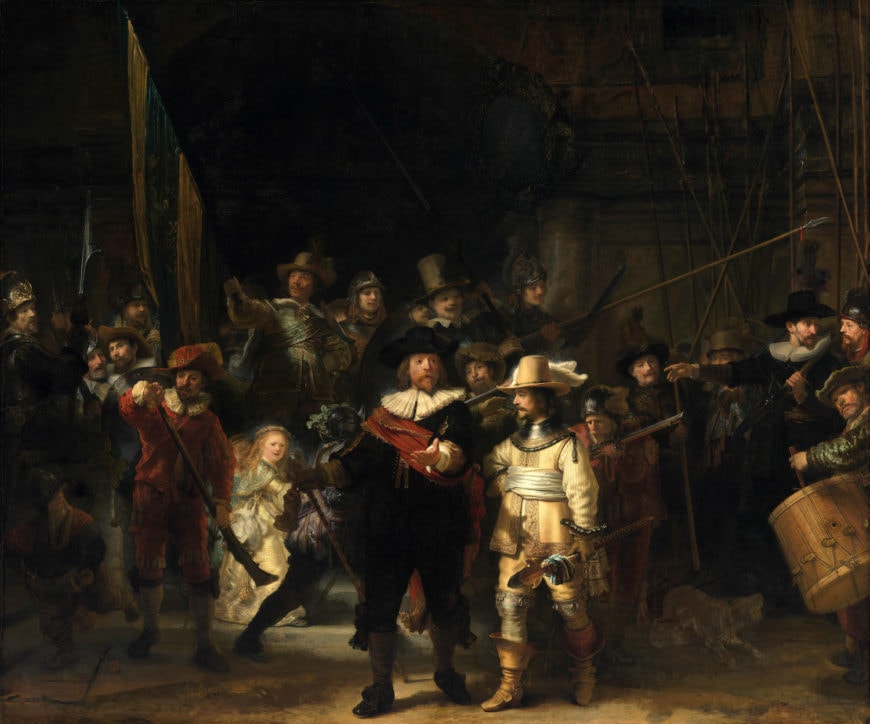
The Night Watch, completed in 1642, is a Baroque masterpiece known for its dramatic use of light and shadow. This group portrait of a Dutch militia company showcases Rembrandt’s skill in capturing individuality and movement within a cohesive composition. Themes of civic pride and community are central to the work. Located in the Rijksmuseum in Amsterdam, it is a testament to his innovative artistry.
The Calling of St. Matthew – Caravaggio (1599–1600)
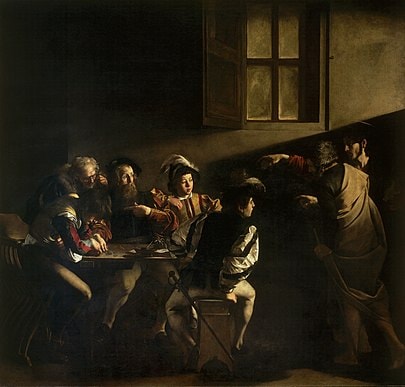
The Calling of St. Matthew by Caravaggio, painted between 1599 and 1600, exemplifies the Baroque style with its dramatic chiaroscuro. The painting captures the moment Jesus calls Matthew to follow him, blending the sacred and the everyday. Caravaggio’s mastery of light and shadow enhances the emotional intensity and realism of the scene. Located in the Contarelli Chapel in Rome, it’s a powerful depiction of faith and transformation.
Las Meninas – Diego Velázquez (1656)
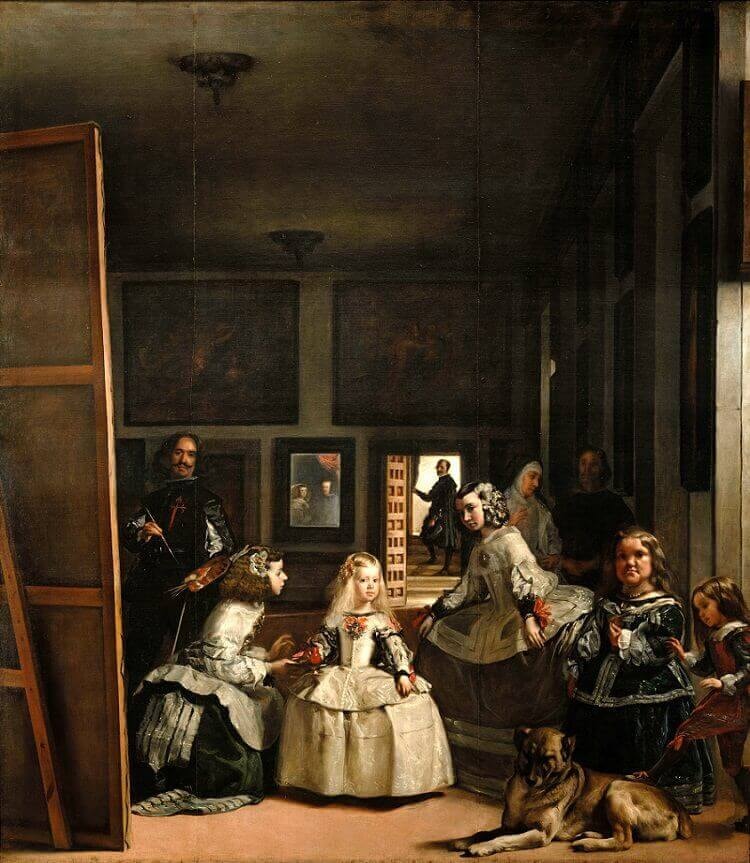
Las Meninas by Diego Velázquez, painted in 1656, is a Baroque masterpiece that challenges conventional perspectives. The painting portrays the Spanish royal family and court and includes himself in the composition. Its complex interplay of gaze, reflection, and light creates a dynamic narrative. Themes of power, artistry, and perception are central to the work. Housed in the Prado Museum in Madrid, it remains a celebrated exploration of reality and illusion.
Judith Slaying Holofernes – Artemisia Gentileschi (1614–1620)
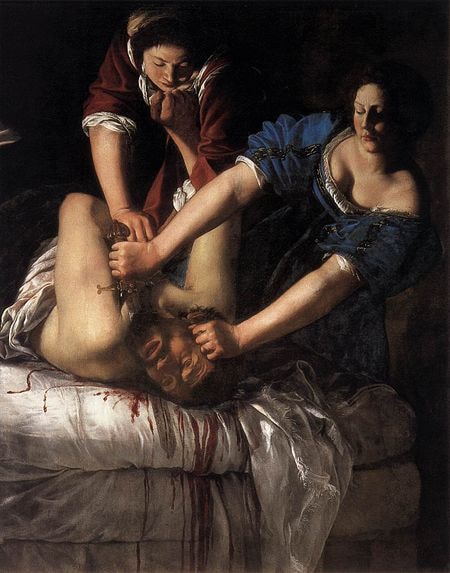
Judith Slaying Holofernes painted between 1614 and 1620 by Artemisia Gentileschi is a powerful Baroque depiction of biblical heroism. The painting captures the dramatic moment Judith beheads Holofernes, symbolizing justice and courage. His use of intense color, dramatic lighting, and realistic detail amplifies the emotional impact. Located in the Uffizi Gallery in Florence, it’s a testament to Gentileschi’s mastery and resilience as a female artist in a male-dominated era.
The Raft of the Medusa – Théodore Géricault (1818–1819)
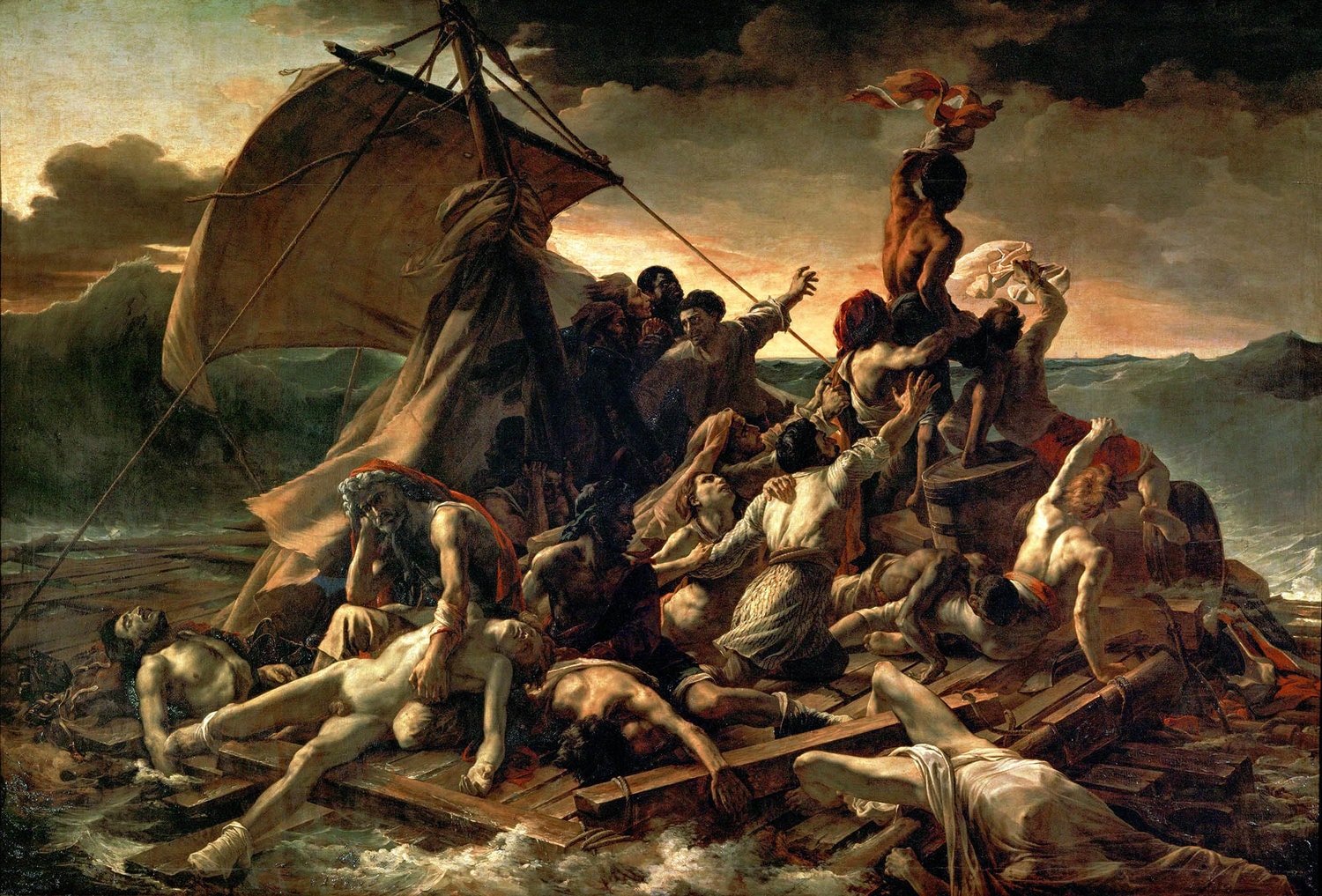
The Raft of the Medusa by Théodore Géricault, painted between 1818 and 1819, is a landmark of Romanticism. Based on a real-life shipwreck, the painting depicts survivors clinging to a raft in a desperate struggle for survival. His meticulous attention and dramatic composition evoke intense emotion. Themes of human endurance and political critique resonate throughout the work. It remains a haunting and powerful commentary on tragedy and resilience and is displayed in the Louvre Museum.
Liberty Leading the People – Eugène Delacroix (1830)
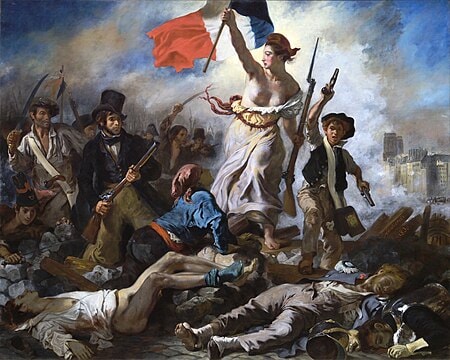
Painted in 1830, Eugène Delacroix’s Liberty Leading the People captures the spirit of revolution and freedom during the July Revolution in France. The painting features Liberty as a powerful female figure leading citizens from various social classes into battle. His dynamic composition and dramatic use of color emphasize the emotional intensity of the scene. The work blends Romanticism with political symbolism, making it a timeless representation of struggle and unity. Today, it is housed in the Louvre Museum in Paris, where it continues to inspire ideals of justice and liberty.
Wanderer Above the Sea of Fog – Caspar David Friedrich (1818)
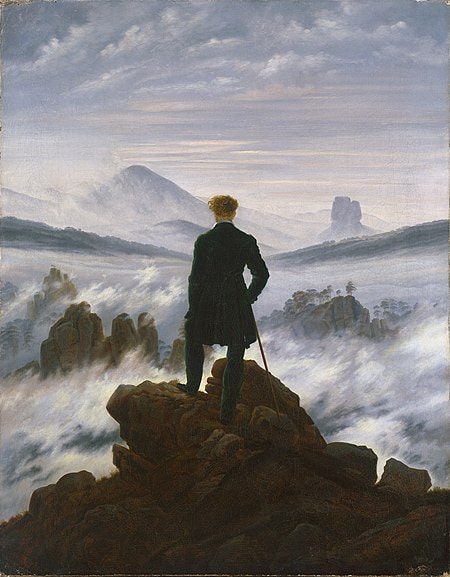
Caspar David Friedrich’s Wanderer Above the Sea of Fog is a typical Romantic painting created in 1818. The artwork depicts a lone figure standing atop a rocky cliff, gazing into a misty, mysterious landscape. His masterful use of perspective and light creates a sense of vastness and introspection. Themes of human insignificance and connection to nature resonate throughout the piece. Located in the Kunsthalle Hamburg.
The Gleaners – Jean-François Millet (1857)
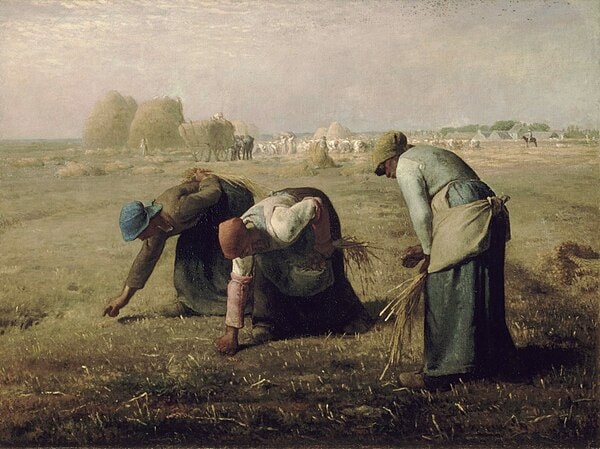
Jean-François Millet’s The Gleaners, painted in 1857, is a landmark of Realism. The painting portrays three peasant women gleaning leftover grain in a field, highlighting the dignity and hardship of rural life. Millet’s use of earthy tones and attention to detail emphasizes the connection between humanity and nature. This painting shows poverty, labor, and resilience as the center of the art. It is housed in the Musée d’Orsay in Paris.
The Stone Breakers – Gustave Courbet (1849)
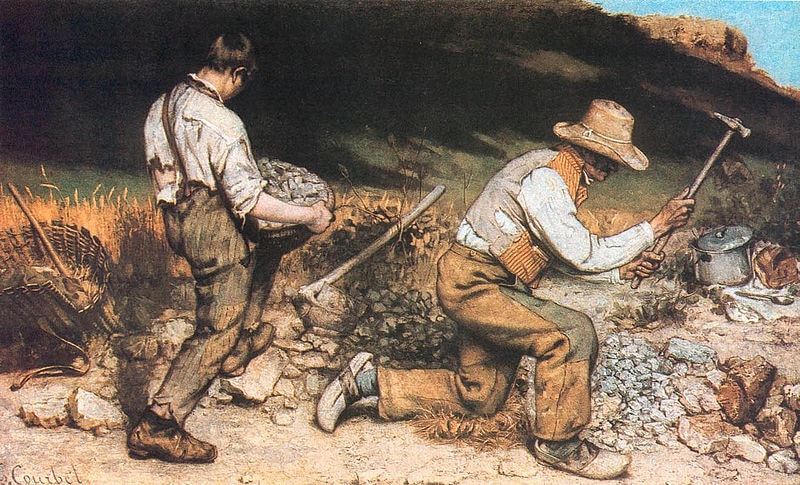
The Stone Breakers is an example of Realism and was painted by Gustave Courbet in 1849. The painting depicts two laborers engaged in the backbreaking task of breaking stones emphasising the harsh realities of manual labor. His muted color palette and focus on physical toil convey the struggles of the working class that shows perseverance and the dignity of labor. Though the original was destroyed during World War II, its legacy endures through reproductions and its influence on social realism.
Impression, Sunrise – Claude Monet (1872)
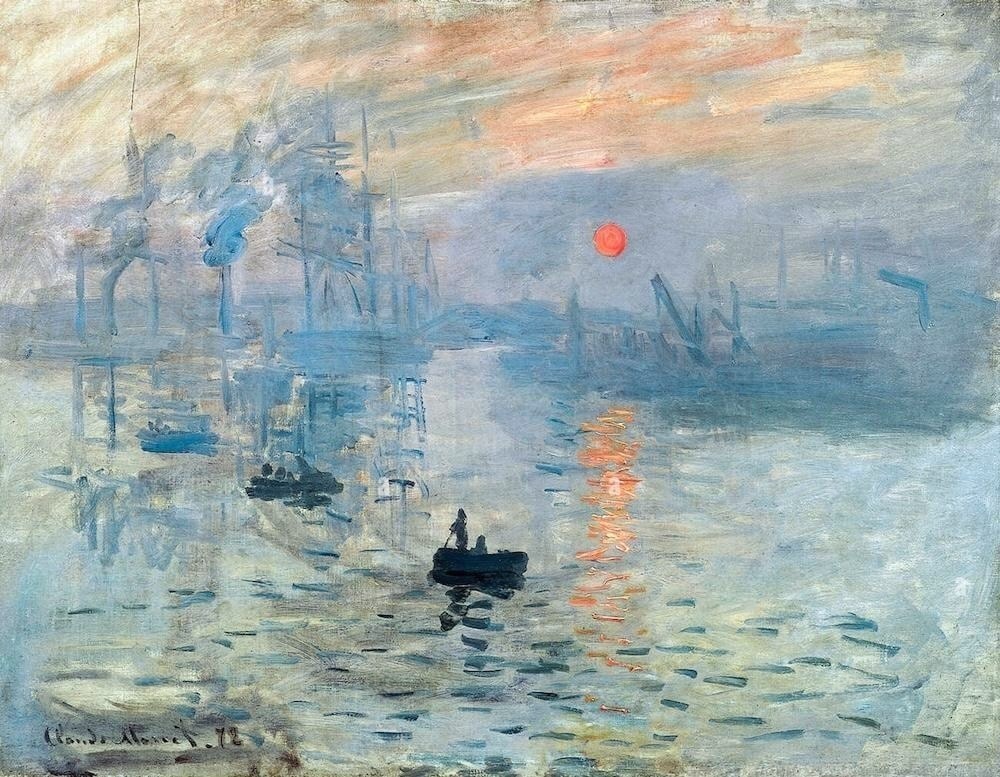
The Claude Monet’s Impression, Sunrise, gave birth to the Impressionist movement, created in 1872. The painting depicts the port of Le Havre at sunrise, using loose brushstrokes and a vibrant color palette to capture fleeting light and atmosphere. His innovative approach rejected detailed realism in favour of emotional immediacy showing modernity and nature’s beauty. This was displayed in the Musée Marmottan Monet in Paris.
Read more on the famous Monet's paintings
Water Lilies (series) – Claude Monet (1915–1926)
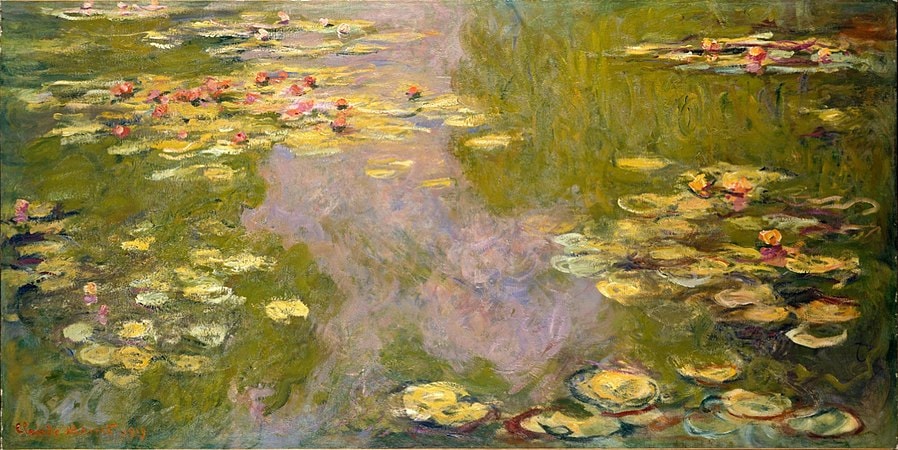
Claude Monet’s Water Lilies series, created between 1915 and 1926, symbolizes Impressionism’s focus on light and atmosphere. Inspired by his garden in Giverny, he captured the serene beauty of water lilies, bridges, and reflections in almost 250 paintings. The use of soft, overlapping brushstrokes and a vibrant color palette transformed ordinary scenes into meditative visual symphonies. The tranquillity, nature’s beauty, and fleeting moments dominate these works. The paintings are housed in museums like the Musée de l’Orangerie in Paris.
The Ballet Class – Edgar Degas (1874)
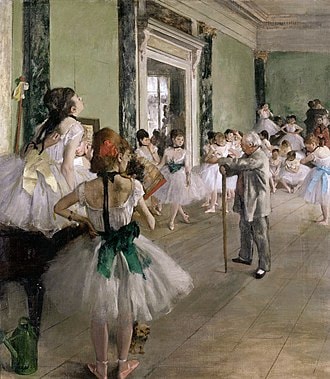
Edgar Degas’ The Ballet Class, painted in 1874, gives a close look at the lives of young ballerinas. Combining Impressionist style with a focus on movement, Degas showed the dancers natural, unposed moments during practice. The painting blends beauty and realism, highlighting posture, outfits, and soft light. It reflects themes of hard work, grace, and the challenges of performance. Now housed in the Musée d’Orsay in Paris.
Luncheon of the Boating Party – Pierre-Auguste Renoir (1880–1881)
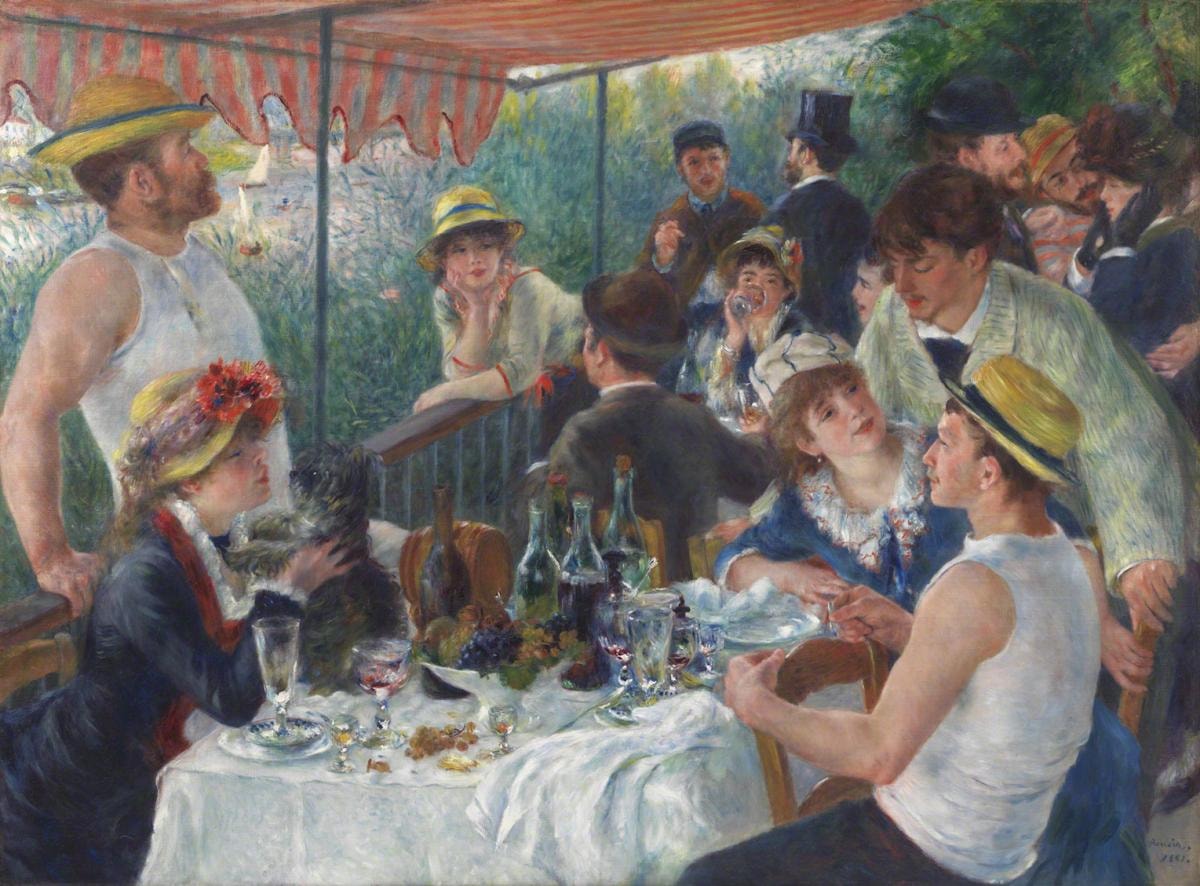
Pierre-Auguste Renoir’s Luncheon of the Boating Party, painted between 1880 and 1881, captures a joyful scene of friends enjoying a sunny afternoon by the Seine. Blending portraits, still life, and landscapes, it showcases the warmth and charm of social gatherings during the Impressionist era. Renoir’s loose brushstrokes and rich colors bring the lively atmosphere to life, highlighting themes of friendship, modern life, and fleeting moments. This iconic painting is displayed in The Phillips Collection in Washington, D.C., where it continues to delight art lovers.
Starry Night – Vincent van Gogh (1889)
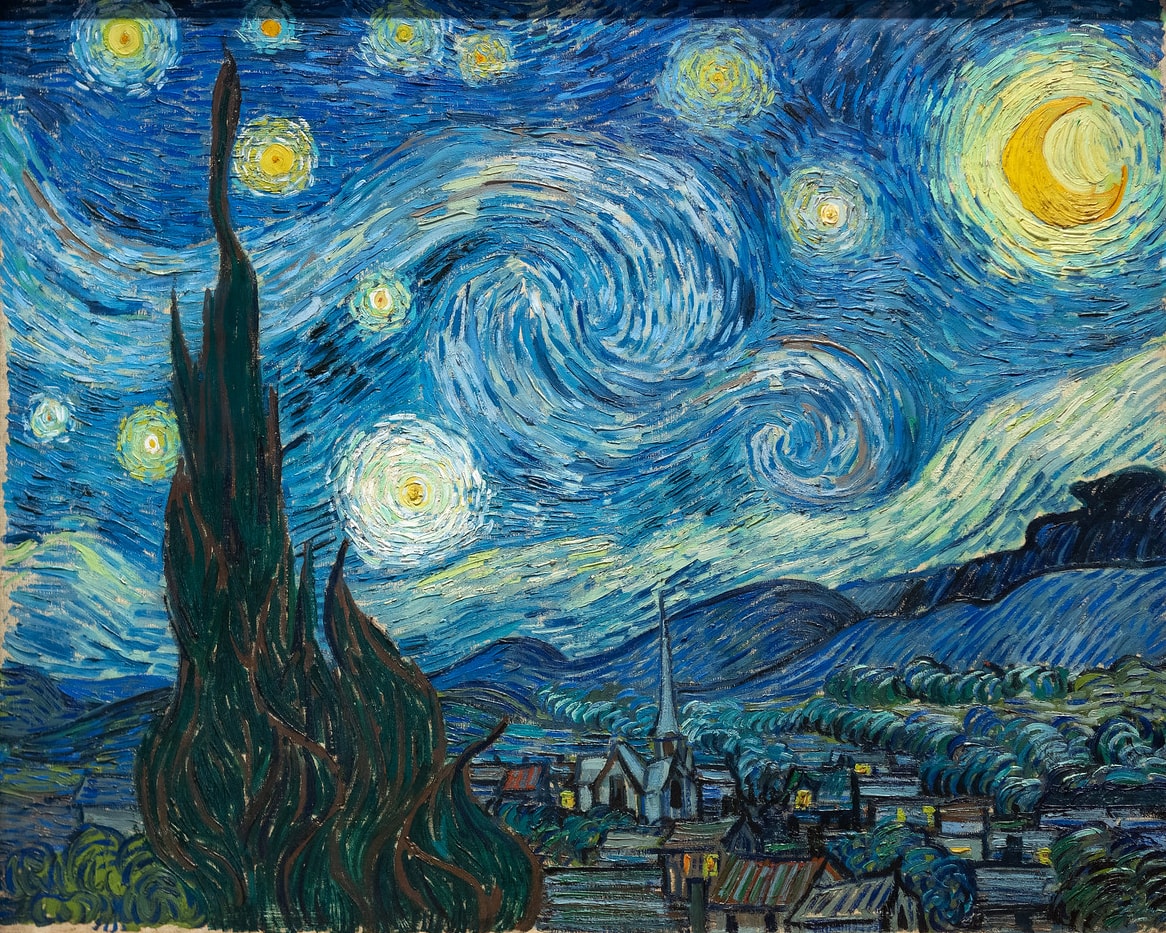
Starry Night is one of the most celebrated works of Vincent van Gogh in Post-Impressionism. This was created in 1889 during his stay at an asylum in Saint-Rémy-de-Provence. The painting depicts a swirling night sky filled with stars over a quiet village evoking a sense of wonder and emotional intensity. His bold use of colour, energetic brushstrokes, and exaggerated forms create a dreamlike quality showing isolation, spirituality, and the sublime beauty of nature. This painting is a testament to van Gogh’s genius and enduring influence on art. Displayed at the Museum of Modern Art (MoMA) in New York City.
Read the related article: Famous Landscape Paintings
Sunflowers – Vincent van Gogh (1888)
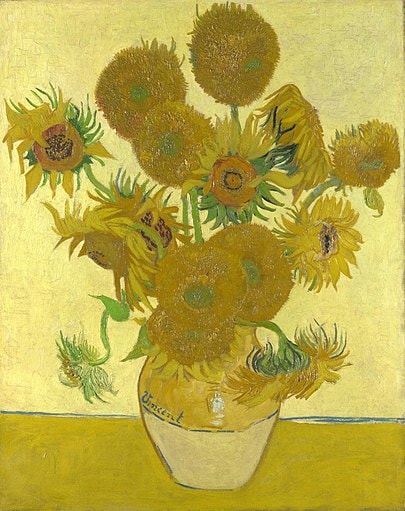
Van Gogh’s Sunflowers, painted in 1888, is one of his most famous works, showcasing vibrant yellow blooms in various stages of life. Created in Arles, France, it was part of a series meant to decorate his home and welcome fellow artist Paul Gauguin. Van Gogh’s use of bold, textured brushstrokes and rich tones highlights the beauty of everyday objects. The painting reflects themes of friendship, hope, and natural cycles of life. Today, versions of Sunflowers can be found in prestigious collections like the Van Gogh Museum in Amsterdam and the National Gallery in London.
The Card Players – Paul Cézanne (1894–1895)
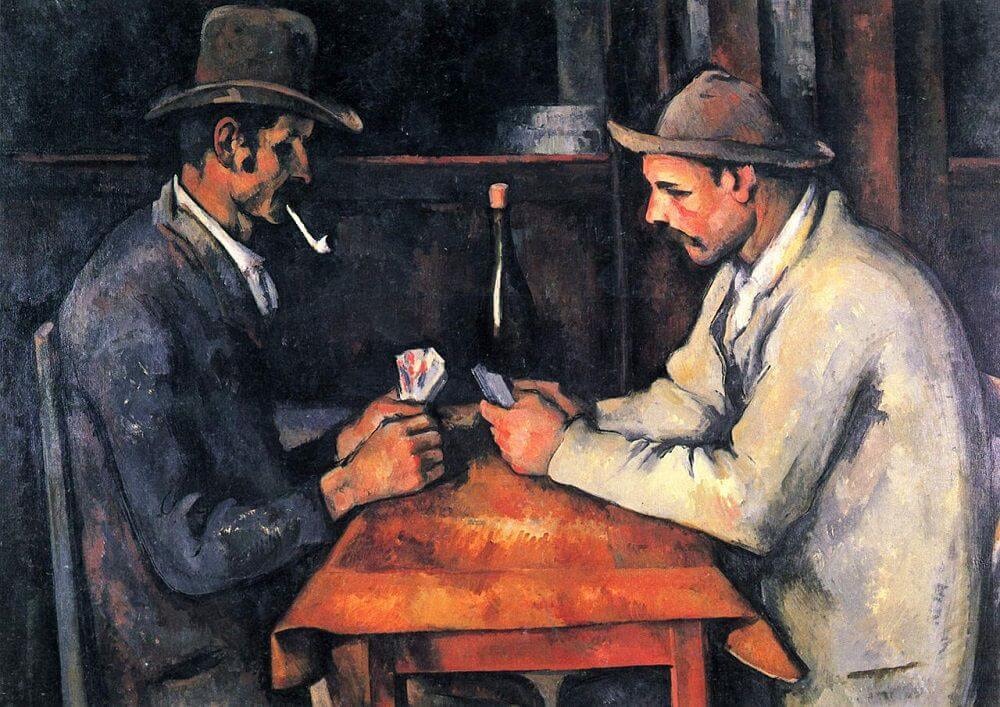
Paul Cézanne’s The Card Players, painted between 1894 and 1895, shows two men playing cards in a calm and focused scene. This Post-Impressionist artwork features Cézanne’s unique style, using simple shapes and earthy colors. It highlights themes of concentration, simplicity, and rural life. His use of geometry and structure played a big role in shaping modern art. One version of The Card Players is in the Musée d’Orsay in Paris, while another is in a private collection.
A Sunday Afternoon on the Island of La Grande Jatte – Georges Seurat (1884–1886)
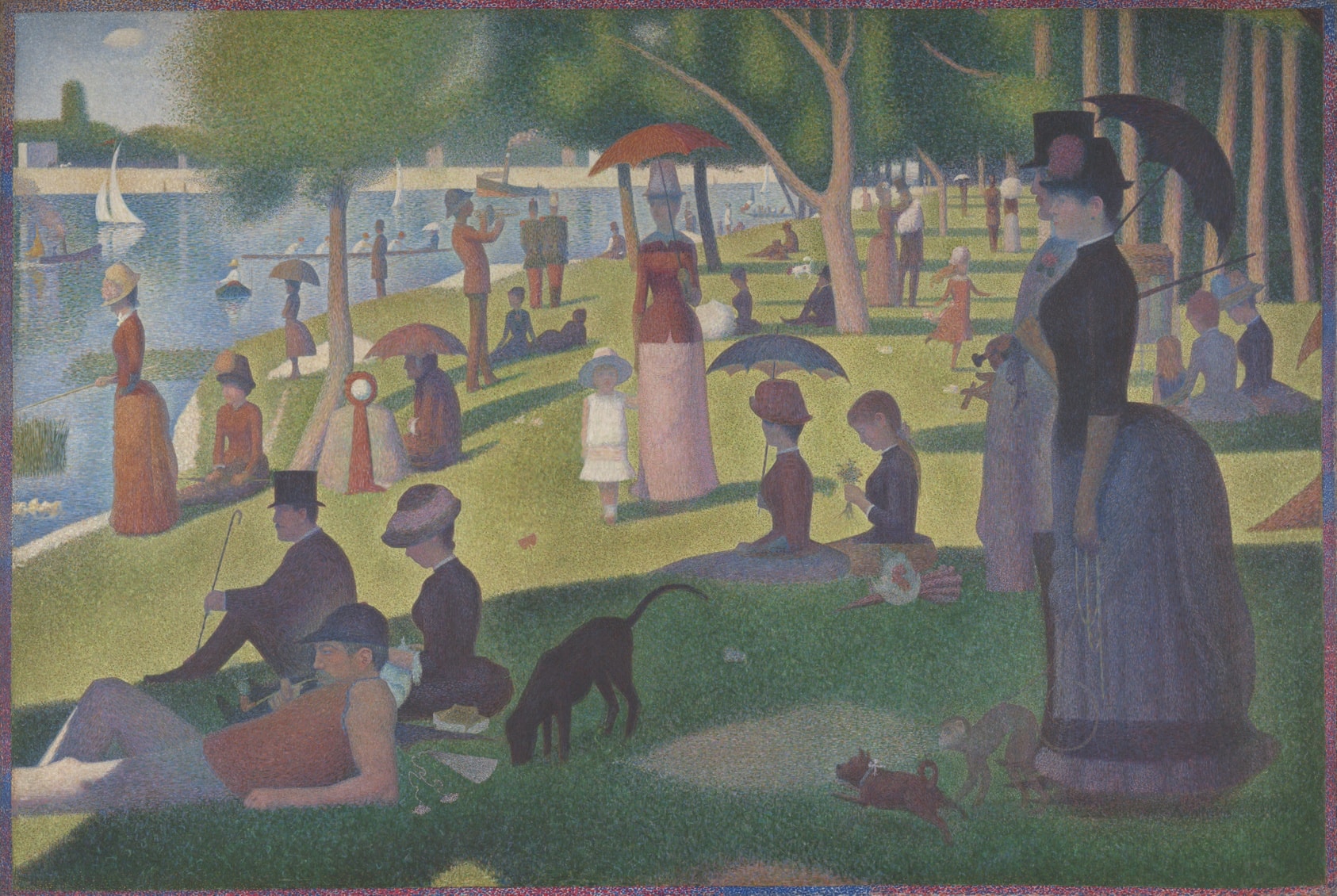
Georges Seurat’s A Sunday Afternoon is a stunning example of Pointillism on the Island of La Grande Jatte. It was completed between 1884 and 1886. Using tiny dots of color to form a cohesive image, Seurat depicts people relaxing by the Seine in a Parisian park. The painting explores themes of leisure, social classes, and modern life. Its innovative technique and serene composition revolutionized art. This masterpiece is displayed at the Art Institute of Chicago.
The Scream – Edvard Munch (1893)
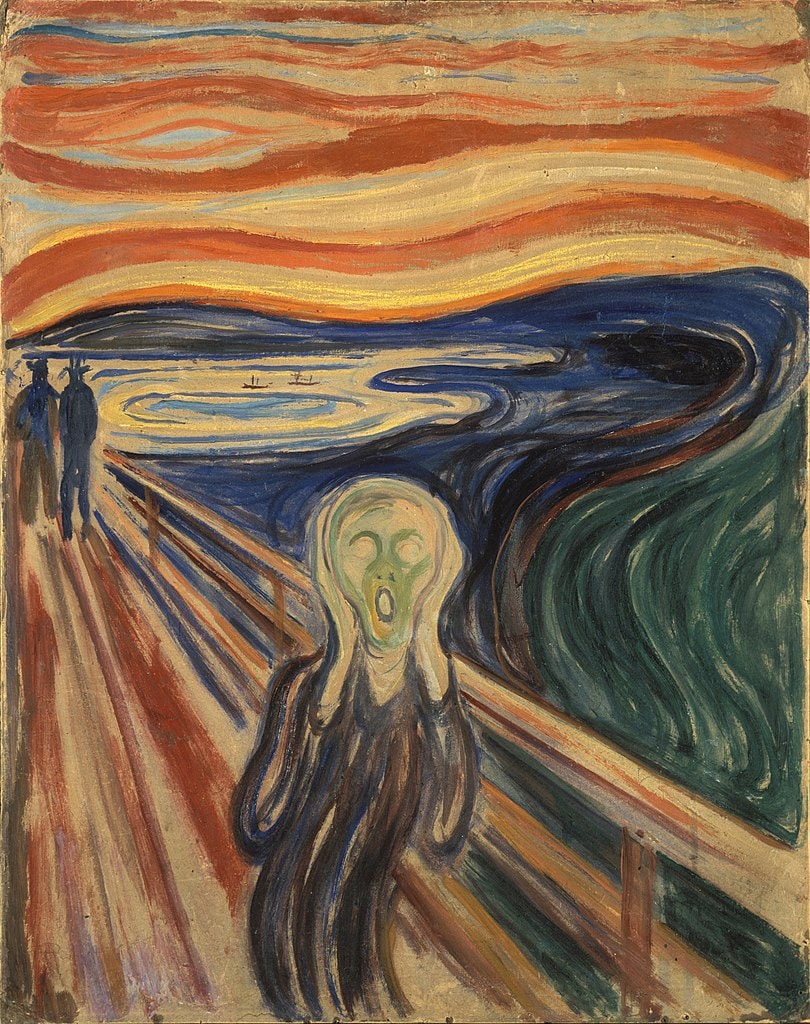
The Scream by Edvard Munch, painted in 1893, shows deep feelings of fear and anxiety. The swirling sky and twisted figure create a sense of tension, representing inner struggles. Munch used bright colors and bold lines to show strong emotions, making this painting a key work of Expressionism. Its themes of fear, loneliness, and emotional pain connect with people everywhere. There are several versions of the painting one in the National Gallery of Norway and in the Munch Museum in Oslo.
The Kiss – Gustav Klimt (1907–1908)
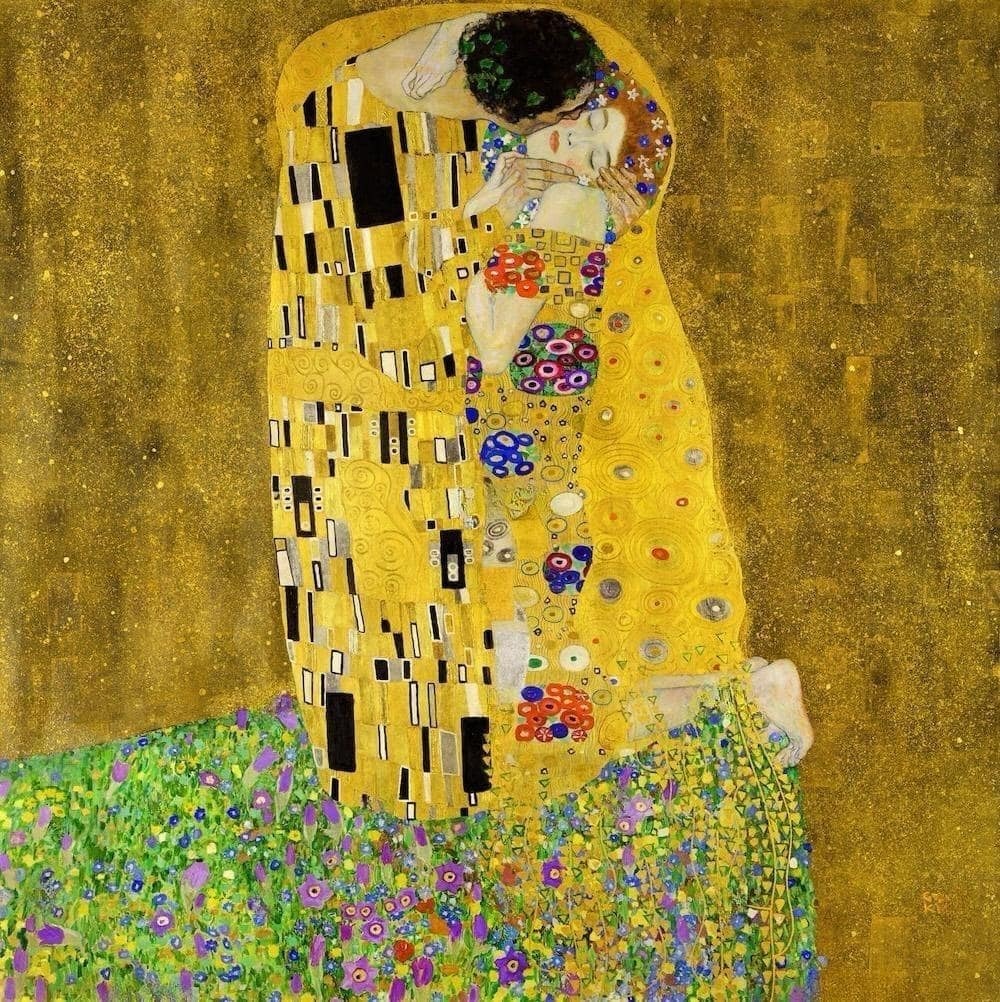
The Kiss created between 1907 and 1908, is a famous Art Nouveau painting by Gustav Klimt. It shows a couple in a loving embrace, surrounded by detailed gold patterns. Klimt’s use of gold leaf and decorative designs highlights love, closeness, and spiritual connection. The mix of abstract patterns and lifelike figures creates a perfect balance. Now displayed at the Belvedere Palace in Vienna, The Kiss is admired for its romantic and luxurious style.
Les Demoiselles d’Avignon – Pablo Picasso (1907)
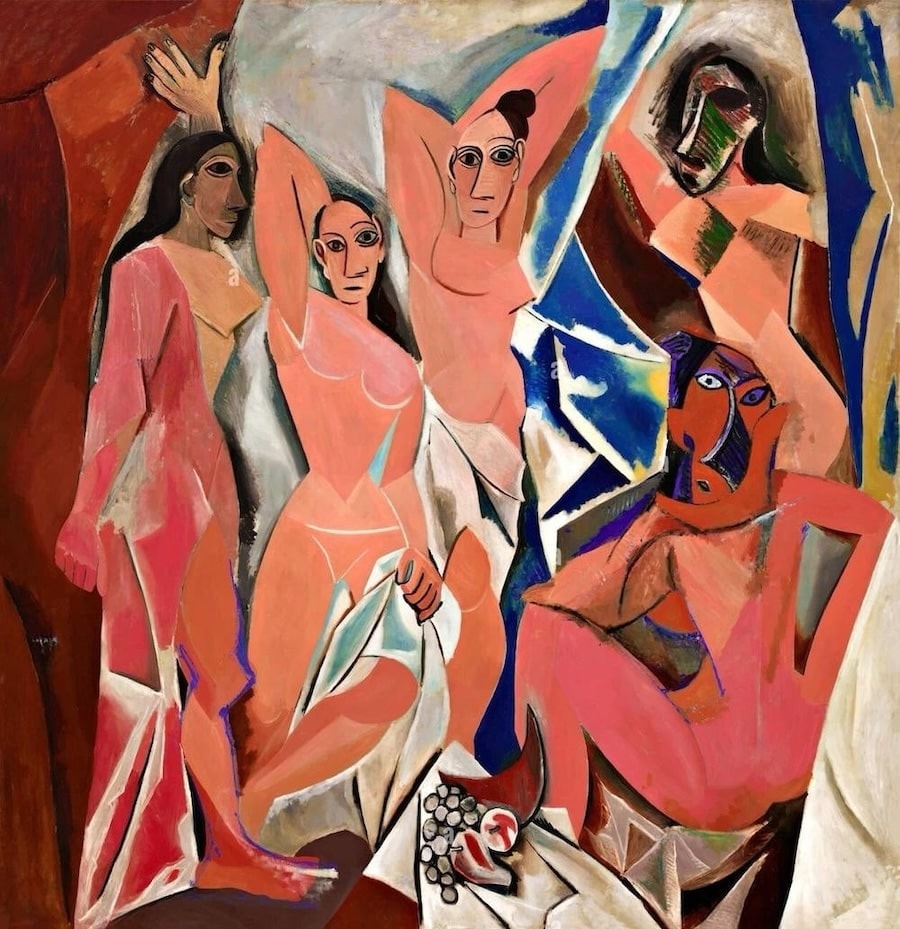
Les Demoiselles d’Avignon by Pablo Picasso, is a groundbreaking work in modern art, painted in 1907. It shows five women with abstract faces and fragmented forms, breaking away from traditional styles and paving the way for Cubism. Influenced by African art and Iberian sculpture, the painting explores sexuality, power, and how we see things. His bold move away from realism changed art forever. This painting is displayed at the Museum of Modern Art (MoMA) in New York City.
Guernica – Pablo Picasso (1937)
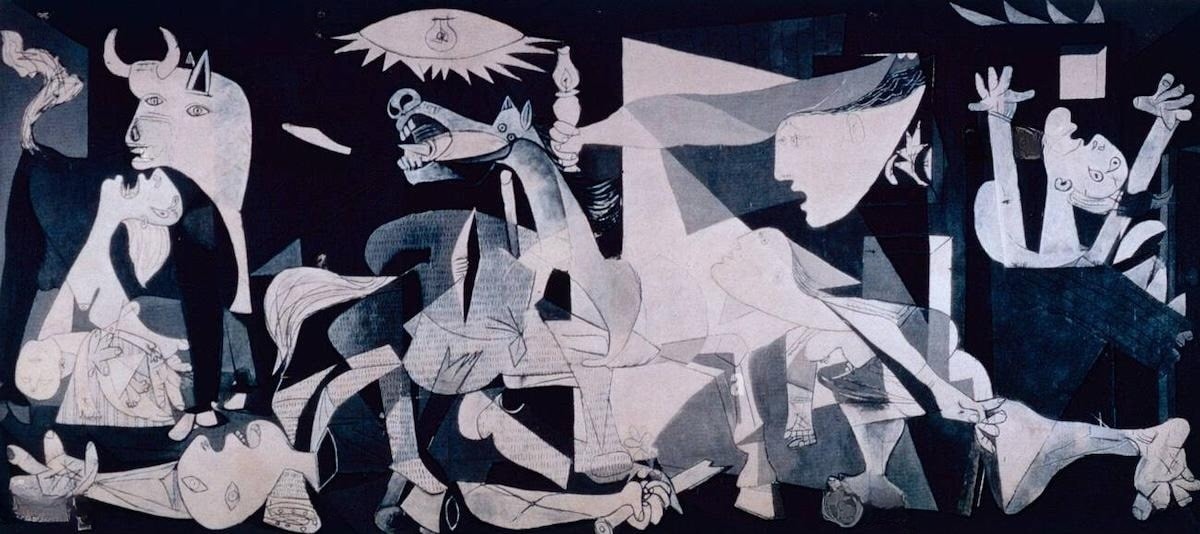
Painted in 1937, Picasso’s Guernica is a powerful anti-war statement inspired by the bombing of Guernica during the Spanish Civil War. The monochromatic palette and chaotic composition convey the horror and suffering of war. The themes of violence, loss, and human resilience dominate the piece. Picasso’s use of distorted forms and fragmented figures heightens the emotional impact. Guernica is displayed at the Museo Reina Sofía in Madrid as a timeless reminder of the cost of conflict.
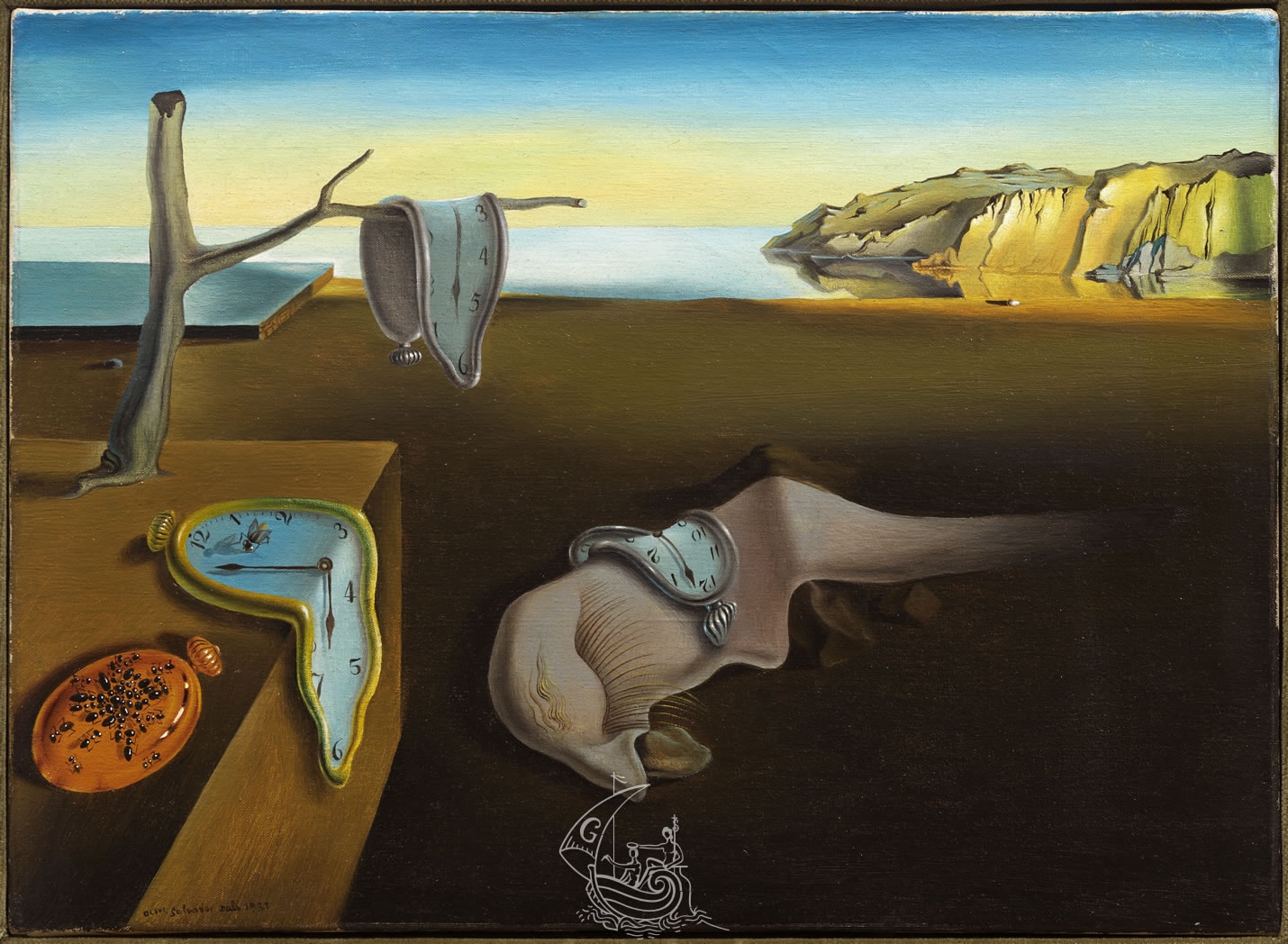
Salvador Dalí’s The Persistence of Memory, painted in 1931, is a Surrealist masterpiece known for its melting clocks and dreamlike landscape. The painting challenges perceptions of time and reality, blending the conscious and subconscious. Dalí’s precise technique and imaginative imagery create an otherworldly effect. Themes of decay, memory, and the fluidity of time make this work deeply thought-provoking. It is housed in the Museum of Modern Art (MoMA) in New York City, captivating viewers with its surreal charm.
Read more on Famous Dali Paintings
The Son of Man – René Magritte (1964)
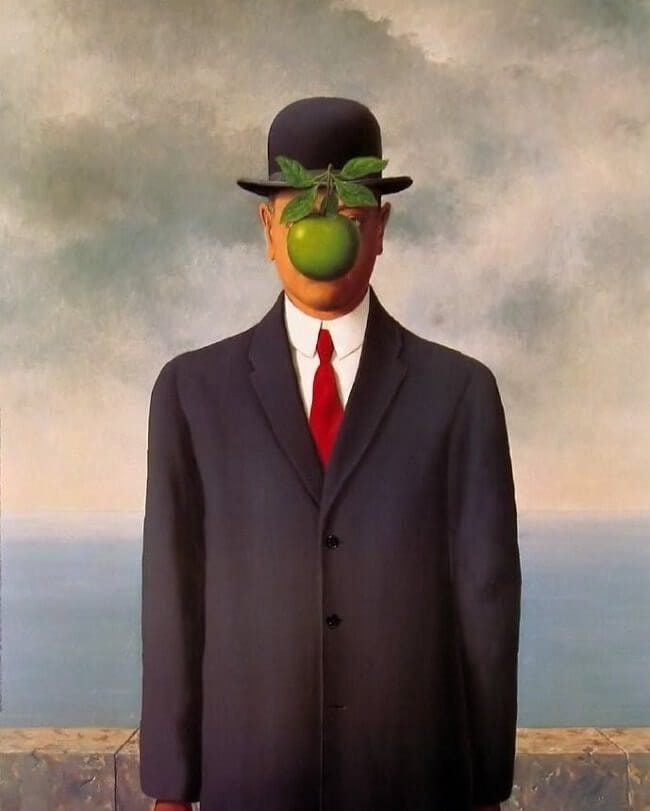
The painting The Son of Man, one of the most mysterious works in modern art, was created by the surrealist artist René Magritte. It depicts a man in a suit and bowler hat with a green apple in front of his face. Magritte explained that the piece explores what we see and hide, presenting a puzzle for viewers to interpret. The unusual blend of ordinary and surreal elements leaves viewers questioning reality.
Composition VIII – Wassily Kandinsky (1923)
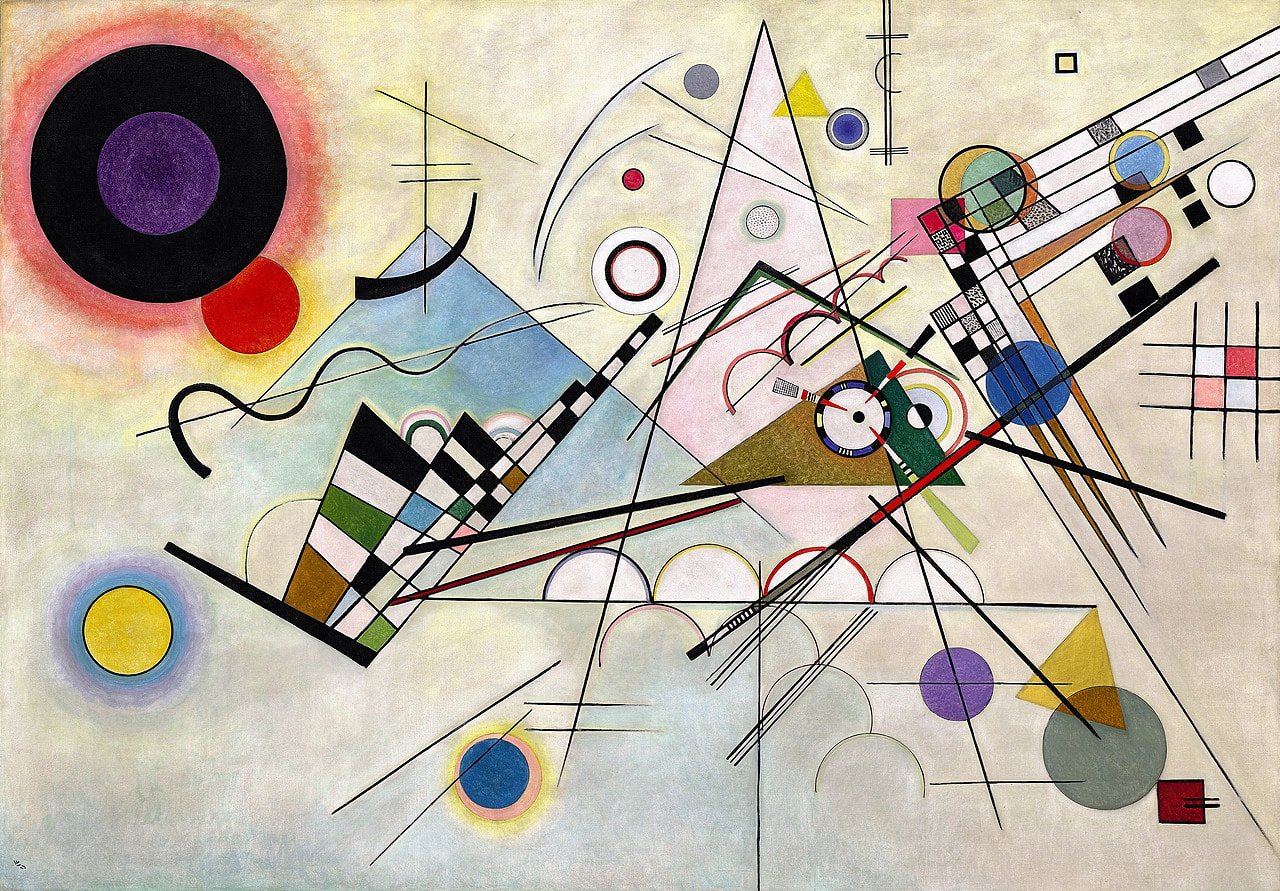
Wassily Kandinsky’s Composition VIII painting, created in 1923, is a burst of shapes, colors, and lines. He believed art should be like music, making people feel emotions through colors and patterns. This abstract painting uses circles, triangles, and curves in a way that feels alive and energetic, giving it a rhythm that draws you in.
Broadway Boogie Woogie – Piet Mondrian (1942–1943)
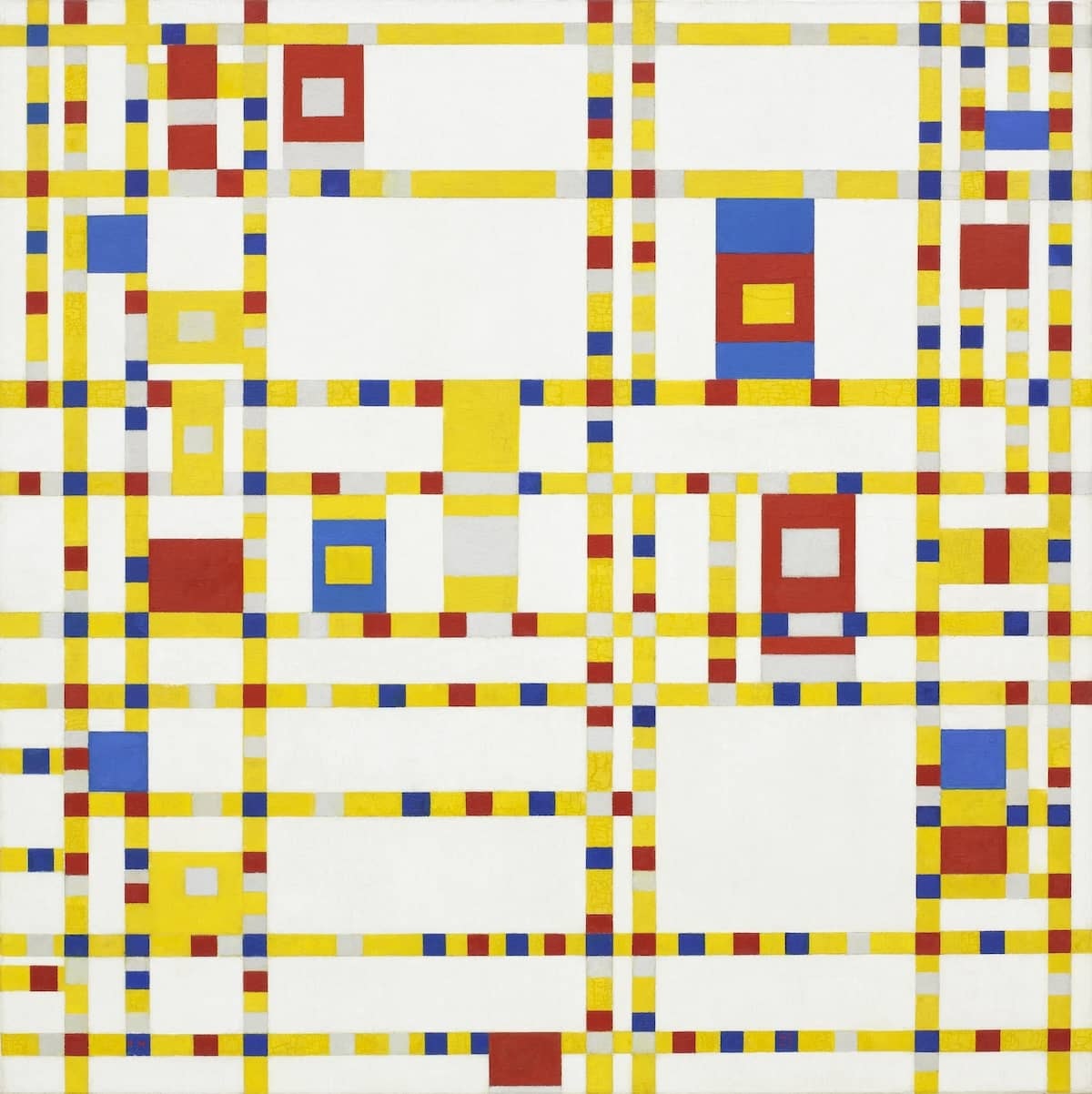
Piet Mondrian’s painting, Broadway Boogie Woogie, captures the energy of New York City with bright squares and rectangles. He is inspired by the fast pace of urban life and jazz music, the painting feels like a map of the city’s streets and lights. The bold colors and grid pattern reflect movement and rhythm.
No. 5, 1948 – Jackson Pollock (1948)
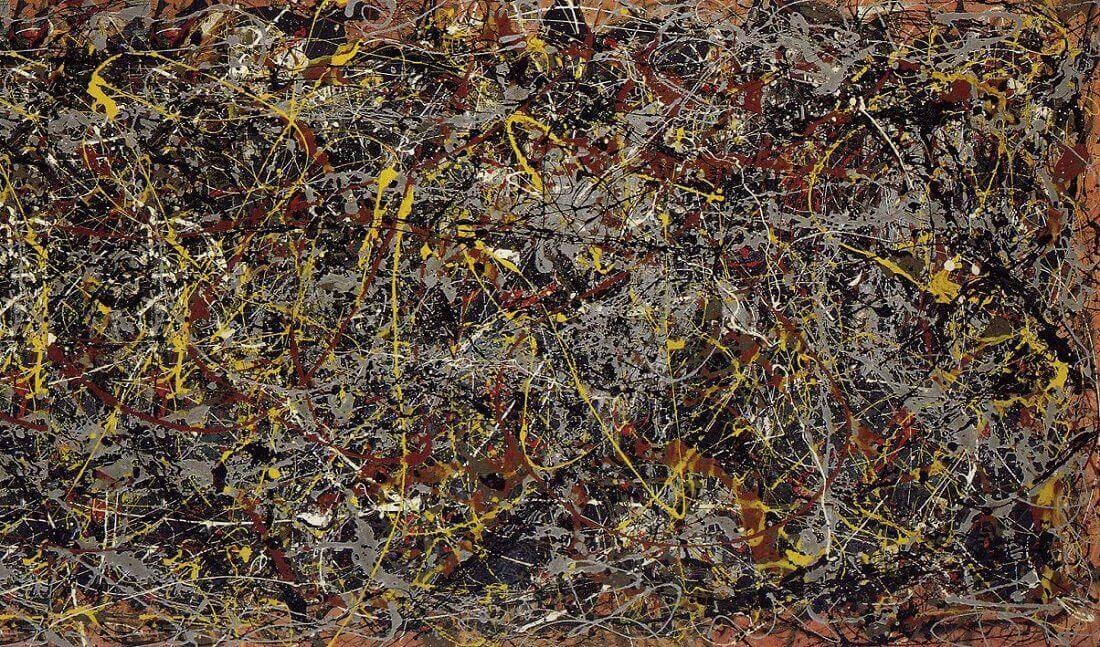
No. 5, 1948, painted by Jackson Pollock, is an example of Abstract Expressionism. The painting was created with his signature drip technique and a chaotic web of layered paint that evokes raw emotion and energy. This painting shows spontaneity, creativity, and subconscious expression. No. 5, 1948 is recognized as one of Pollock’s most important contributions to modern art.
Campbell's Soup Cans – Andy Warhol (1962)
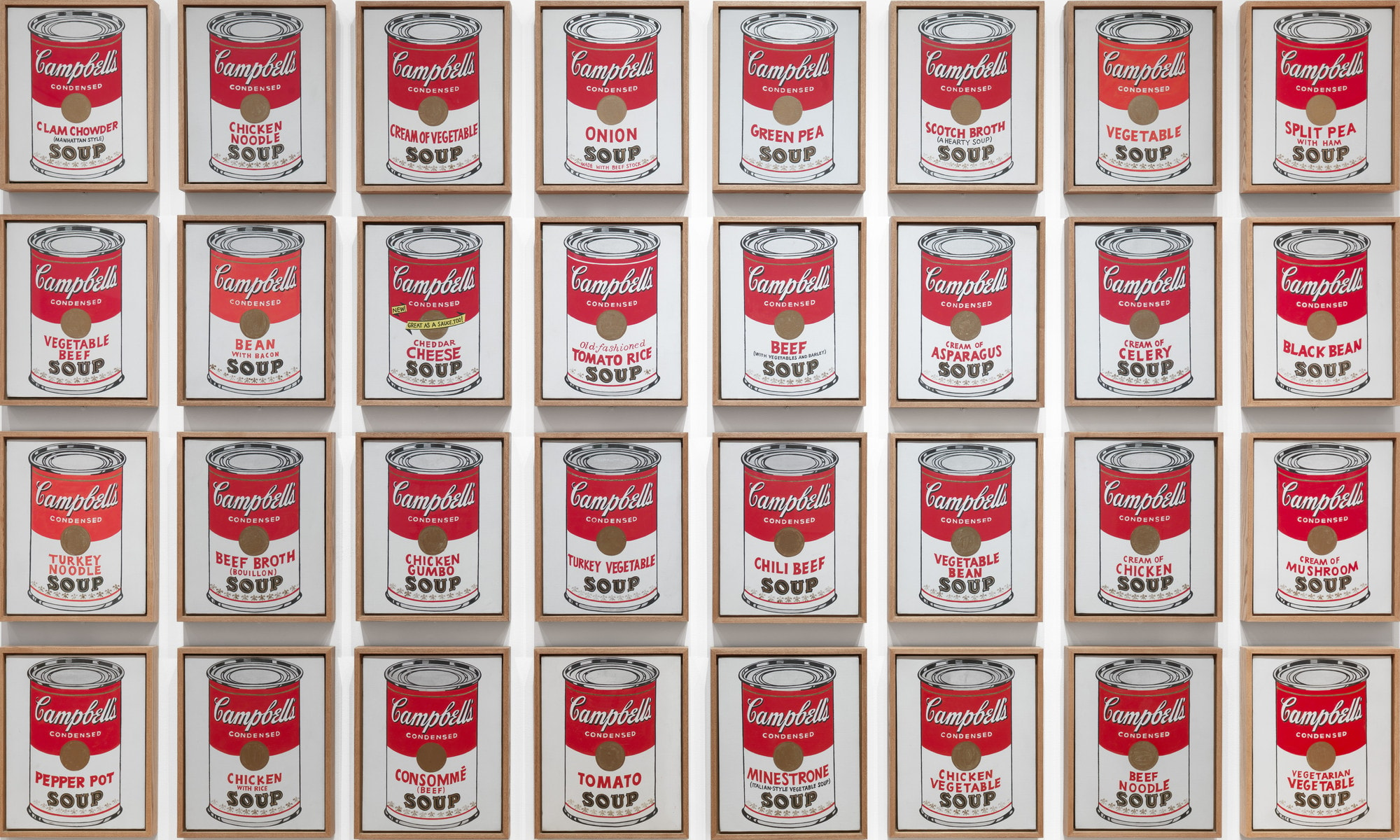
Andy Warhol’s Campbell’s Soup Cans, created in 1962, is a pop art masterpiece that redefines the concept of art. The series consists of 32 canvases, each painting depicting a different flavor of Campbell’s soup. His work celebrates consumer culture and challenges traditional notions of artistic value. The themes of mass production, branding, and modern life are central to the piece. The original series is displayed at the Museum of Modern Art (MoMA) in New York City.
Girl with a Pearl Earring – Johannes Vermeer (c. 1665)
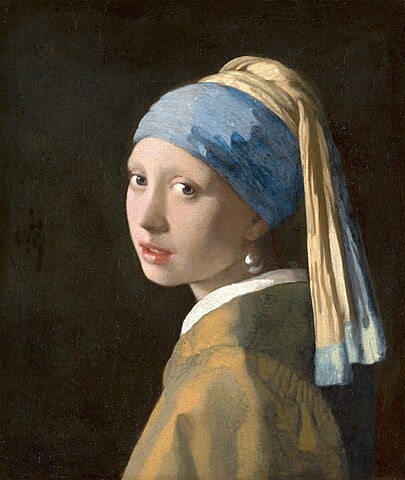
Girl with a Pearl Earring, painted around 1665 by Johannes Vermeer is often called the “Mona Lisa of the North.” This Baroque masterpiece portrays a young girl wearing a turban and a large pearl earring, with a captivating, enigmatic gaze. He uses light and color to create a lifelike quality that emphasizes the themes of beauty and mystery. The painting is displayed in the Mauritshuis in The Hague, Netherlands.
Whistler’s Mother – James McNeill Whistler (1871)
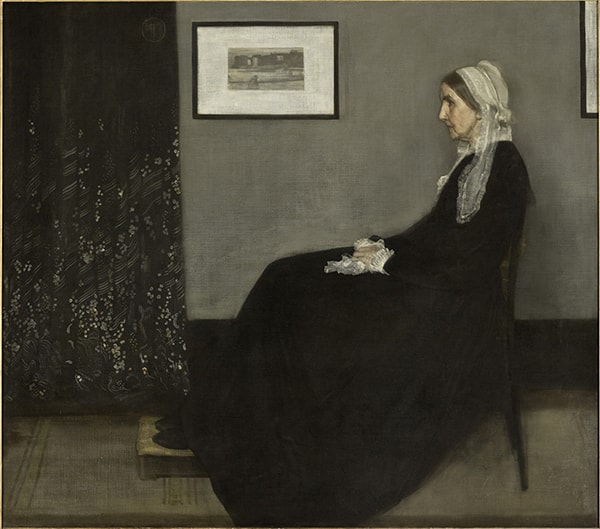
Whistler’s Whistler’s Mother is one of the most famous works of American art. This was created in 1871 by a famous artist James McNeill. This was officially titled Arrangement in Grey and Black No. 1, the painting depicts the artist’s mother seated in profile. His use of muted tones and balanced composition emphasize themes of motherhood, devotion, and simplicity. This iconic artwork is housed in the Musée d’Orsay in Paris.
American Gothic – Grant Wood (1930)
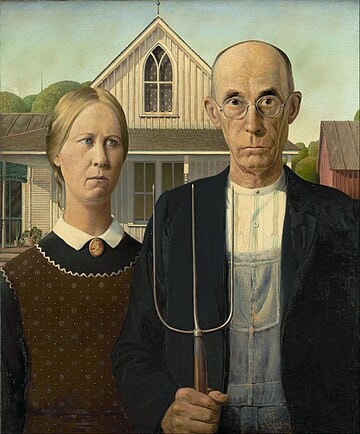
American Gothic by Grant Wood, painted in 1930, shows a snapshot of rural American life during the Great Depression. The artwork features a serious-looking farmer and his daughter standing in front of a house with a pointed Gothic-style window. Wood’s realistic style and use of symbols highlight themes of strength, tradition, and identity. This famous painting is on display at the Art Institute of Chicago.
The Great Wave off Kanagawa – Katsushika Hokusai (c. 1831)
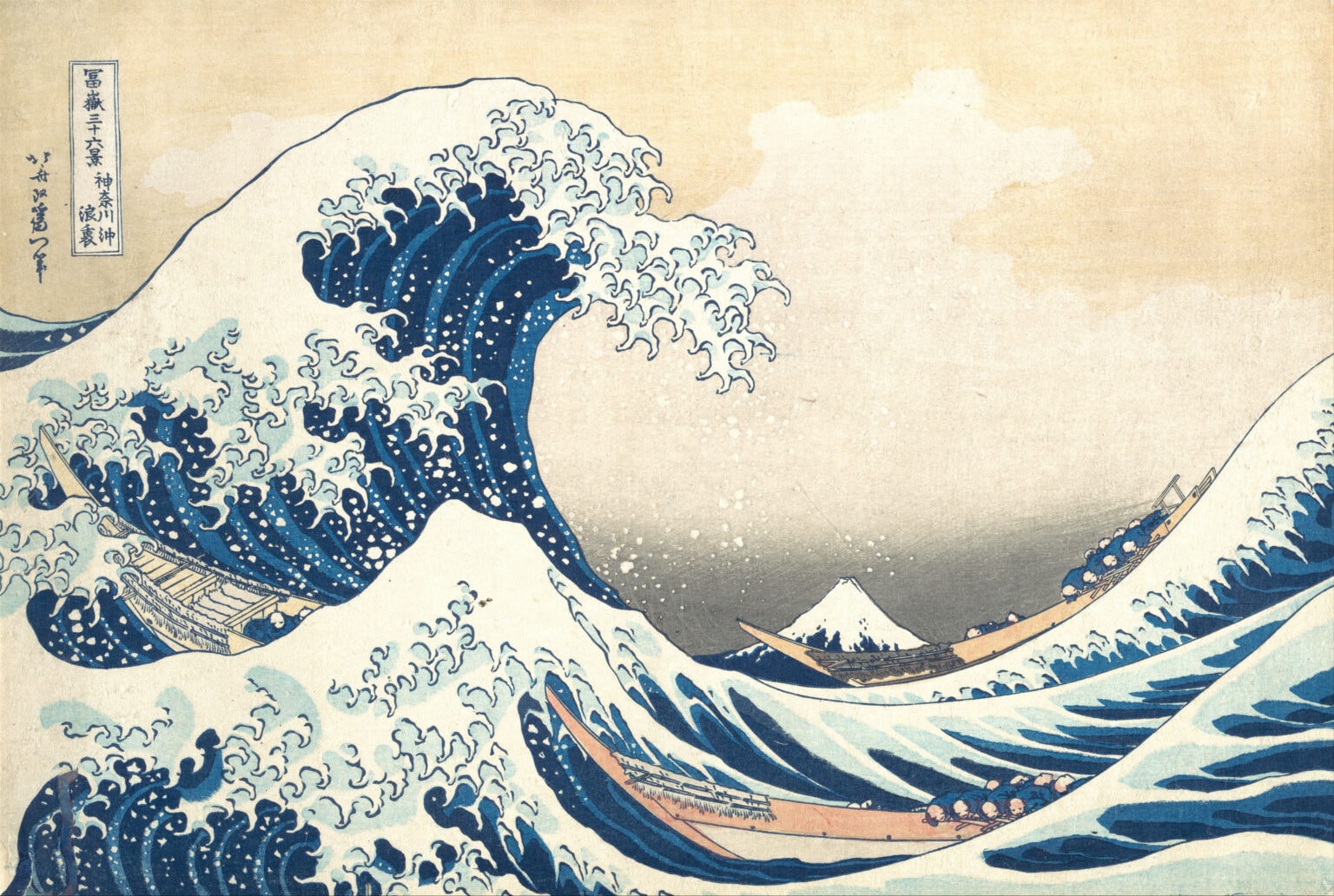
Katsushika Hokusai’s The Great Wave off Kanagawa made around 1831, is one of the most famous Japanese artworks. This shows a huge wave about to crash onto small boats, with Mount Fuji in the background. Hokusai used strong shapes and colors to show the power of nature and how small humans can feel in comparison. It is part of the Thirty-Six Views of Mount Fuji series and is displayed in museums, including the Metropolitan Museum of Art in New York City.
Conclusion
The world's most famous paintings are more than just remarkable works of art; they are windows into the evolution of human culture, creativity, and expression. Each masterpiece carries its own story, reflecting the emotions, historical moments, and artistic movements of its time. From the lifelike realism of the Renaissance to the bold abstraction of modern art, these paintings continue to inspire and connect people across generations. They remind us of the enduring power of art to transcend time, communicate universal truths, and celebrate the beauty of human imagination.
We invite you to visit MintSuper Art and discover other amazing paintings. Start your journey into the world of art today!

